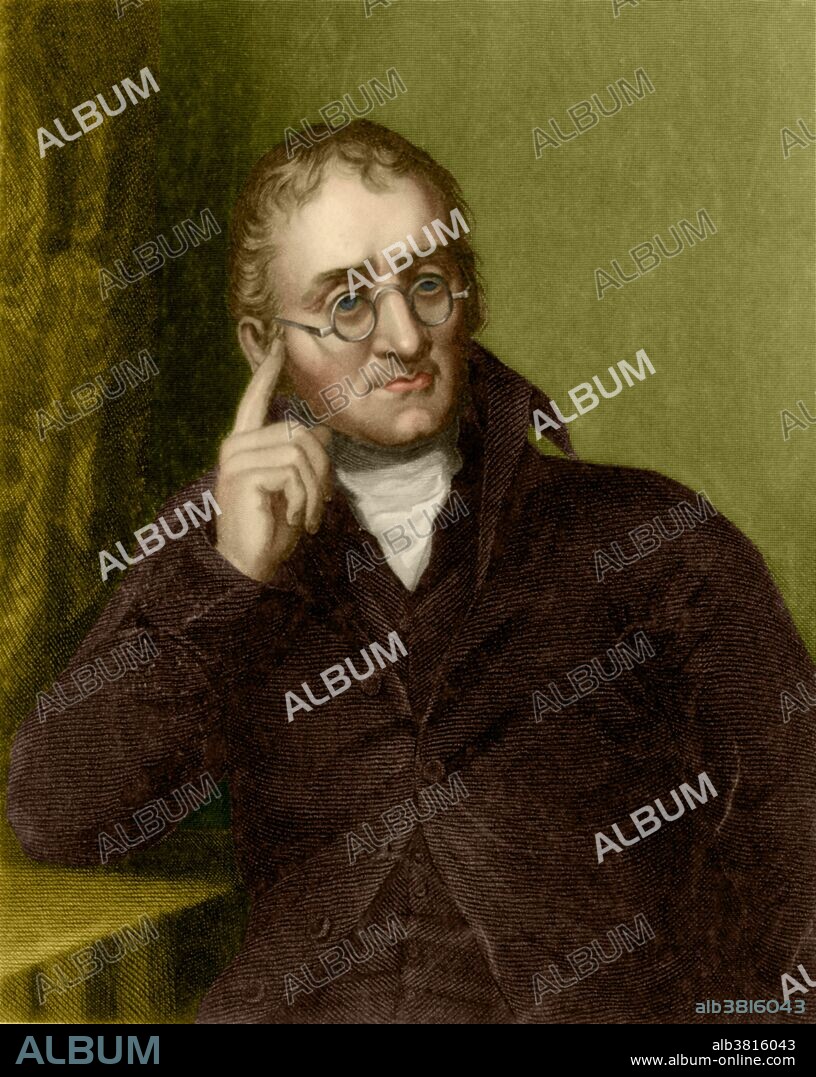alb3816043
John Dalton, English Chemist

|
Add to another lightbox |
|
Add to another lightbox |



Title:
John Dalton, English Chemist
Caption:
John Dalton (September 6, 1766 - July 27, 1844) was an English chemist, meteorologist and physicist. Though he is best known for his pioneering work in the development of modern atomic theory he began a meteorological diary in 1787 in which he entered more than 200,000 observations. In the early 1800's he began his life's work culminating in his atomic theory that consists of five main points; 1) elements are made of extremely small particles called atoms, 2) atoms of a given element are identical in size, mass, and other properties, thus atoms of different elements differ in size, mass, and other properties, 3) atoms cannot be subdivided, created, or destroyed, 4) atoms of different elements combine in simple whole-number ratios to form chemical compounds, and 5) in chemical reactions, atoms are combined, separated, or rearranged. Dalton used his own symbols to visually represent the atomic structure of compounds. Many of the first compounds listed in the New System of Chemical Philosophy correspond to modern views, although many others do not. He died in 1844 at the age of 77.
Credit:
Album / Science Source
Releases:
Model: No - Property: No
Rights questions?
Rights questions?
Image size:
2945 x 3696 px | 31.1 MB
Print size:
24.9 x 31.3 cm | 9.8 x 12.3 in (300 dpi)
Keywords:
1766 • 1808 • 1844 • 18TH CENTURY • 18TH CENTURY, THE • 18TH • 19TH CENTURY • ART • ARTWORK • ATOMIC THEORY • CELEBRITY • CHEMIST • CHEMISTRY • COLOR BLIND • COLOR BLINDNESS • COLORIZED • DALTON • DALTONISM • DRAWING • ENGLISH • ENGRAVING • ENHANCED • EUROPEA • EUROPEAN • FAMOUS • FIGURE • HISTORIC • HISTORICAL • HISTORY • ILLUSTRATION • IMPORTANT • J. DALTON • JOHN DALTON • MALE • MAN • MEN • METEOROLOGIST • METEOROLOGY • METEOROLOGY • MODERN ATOMIC THEORY • NEW SYSTEM OF CHEMICAL PHILOSOPHY • NOTABLE • PEOPLE • PERSON • PERSONALITIES • PERSONALITY • PHYSICIST • PHYSICS • SCIENCE • SCIENTIST • WEATHERMAN • WELL-KNOWN
 Pinterest
Pinterest Twitter
Twitter Facebook
Facebook Copy link
Copy link Email
Email

